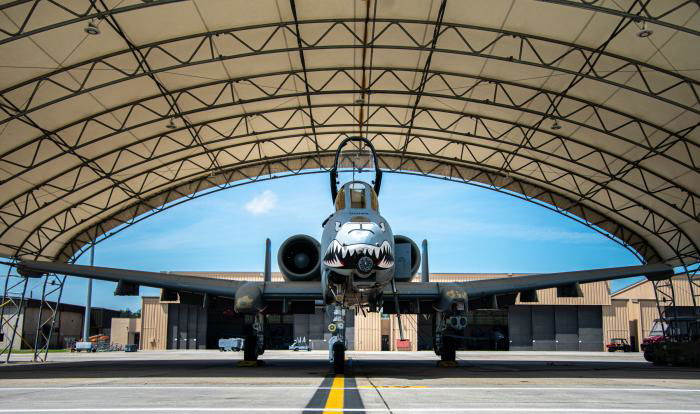After the US Congress relented in its stance on blocking the USAF’s long-standing desire to axe its fleet of A-10C Thunderbolt II close air support aircraft last year, the air arm retired the first of 21 ‘Warthogs’ that it was authorised to divest under the FY23 National Defense Authorization Act (NDAA) on April 5.
Formerly assigned to the 74th Fighter Squadron (FS) ‘Flying Tigers’ – part of the 23rd Fighter Group – the aircraft (serial 80-0149) was flown from Moody Air Force Base (AFB), Georgia, to the famous boneyard at Davis-Monthan AFB, Arizona, where it will be stripped of parts that could be reused on other still-operational A-10Cs and preserved in long-term storage by the 309th Aerospace Maintenance and Regeneration Group (AMARG). Having initially started life as an A-10A Thunderbolt II, this aircraft was later upgraded to the current C-model configuration and had logged a total of 14,125 flight hours during its 43-year career.
While the 74th FS bade farewell to A-10C (serial 80-0149) on April 5, the ‘Flying Tigers’ received a replacement aircraft to fill its ranks courtesy of the 163rd FS ‘Blacksnakes’ – a component of the Indiana Air National Guard’s 122nd Fighter Wing, which is in the process of converting back to the F-16C/D Fighting Falcon.

Capt Kevin Domingue, an A-10C pilot from the 74th FS, said: “It’s sad to see this aircraft reach the end of its service to the US… The A-10’s remain the most effective close air support platform in the world today even after 45 years. As long as the Air Force allows the aircraft to fly and be properly maintained, this community is ready to provide that expertise anywhere in the world against any adversary.”
The withdrawal of this aircraft marks a major milestone for the USAF as it pushes forward with the retirement of the first 21 A-10Cs from operational service this year – a plan that was approved by the US Congress under the FY23 NDAA in 2022, after lawmakers were at odds with the Air Force over proposals to withdraw the type from use. The USAF will retire the remaining 20 aircraft from service by the end of September, prioritising airframes with the least combat effectiveness to ensure the most-capable examples remain operational.
At the Air and Space Forces Association Warfare Symposium in Aurora, Colorado, on March 7, USAF Chief of Staff Gen Charles Q Brown Jr told reporters that the air arm wants to retire all of its remaining A-10Cs by the end of 2029. As per its FY24 NDAA budget request, the USAF has proposed cutting a further 42 ‘Warthogs’, a move which would leave 218 examples in operational service. Prior to the arrival of this latest aircraft, the last time the USAF had withdrawn a significant number of A-10s from service was in 2014.

